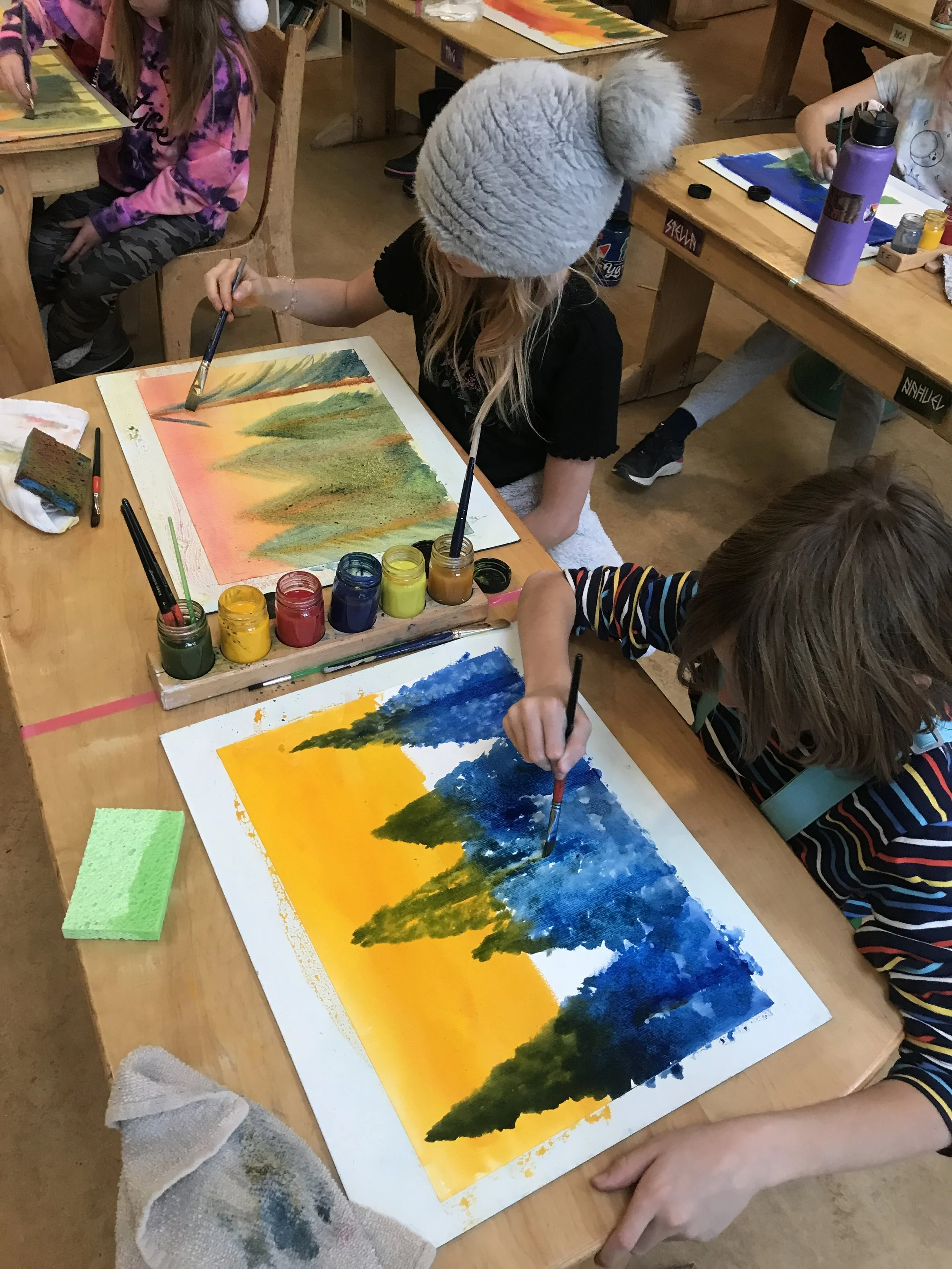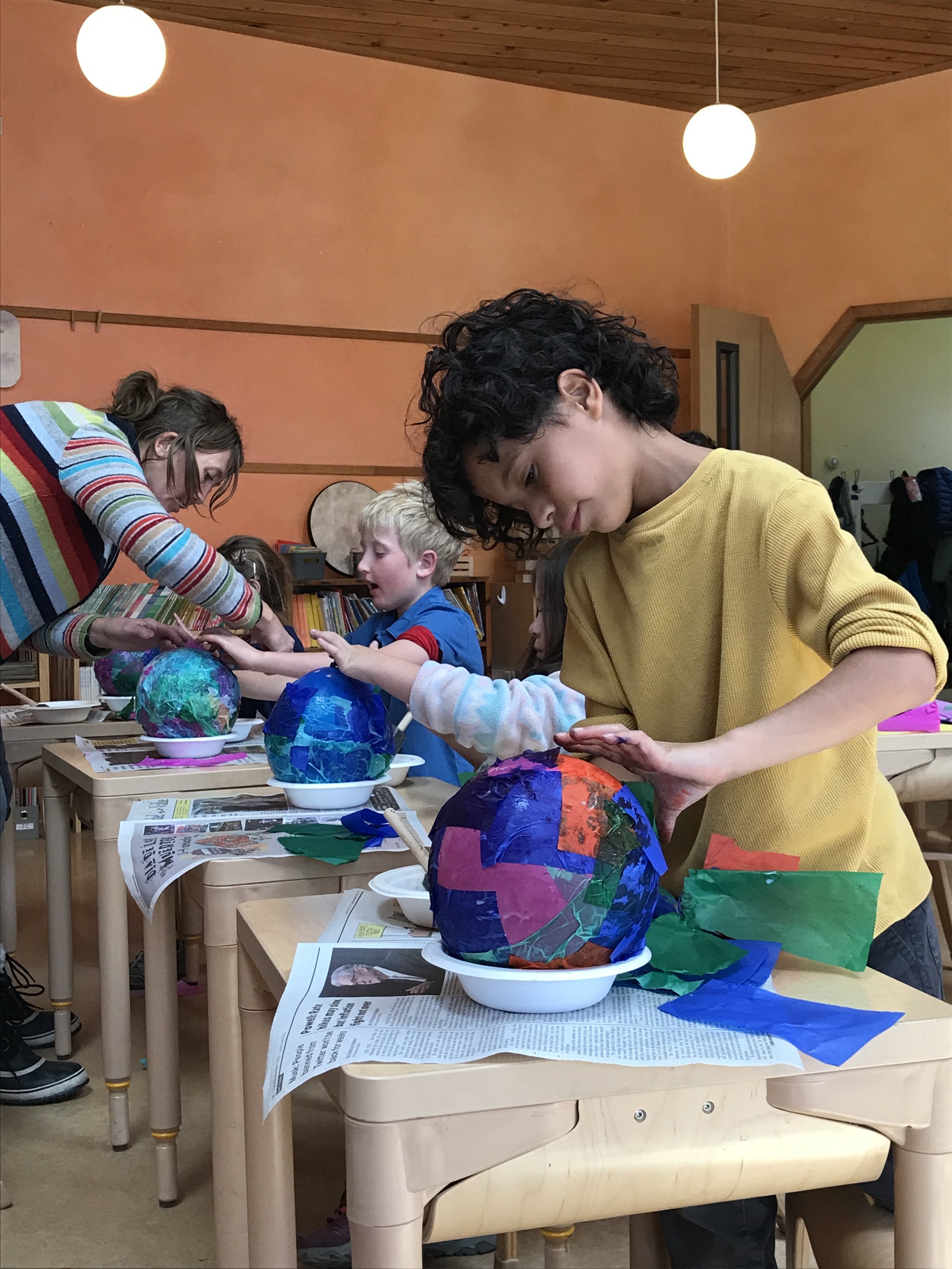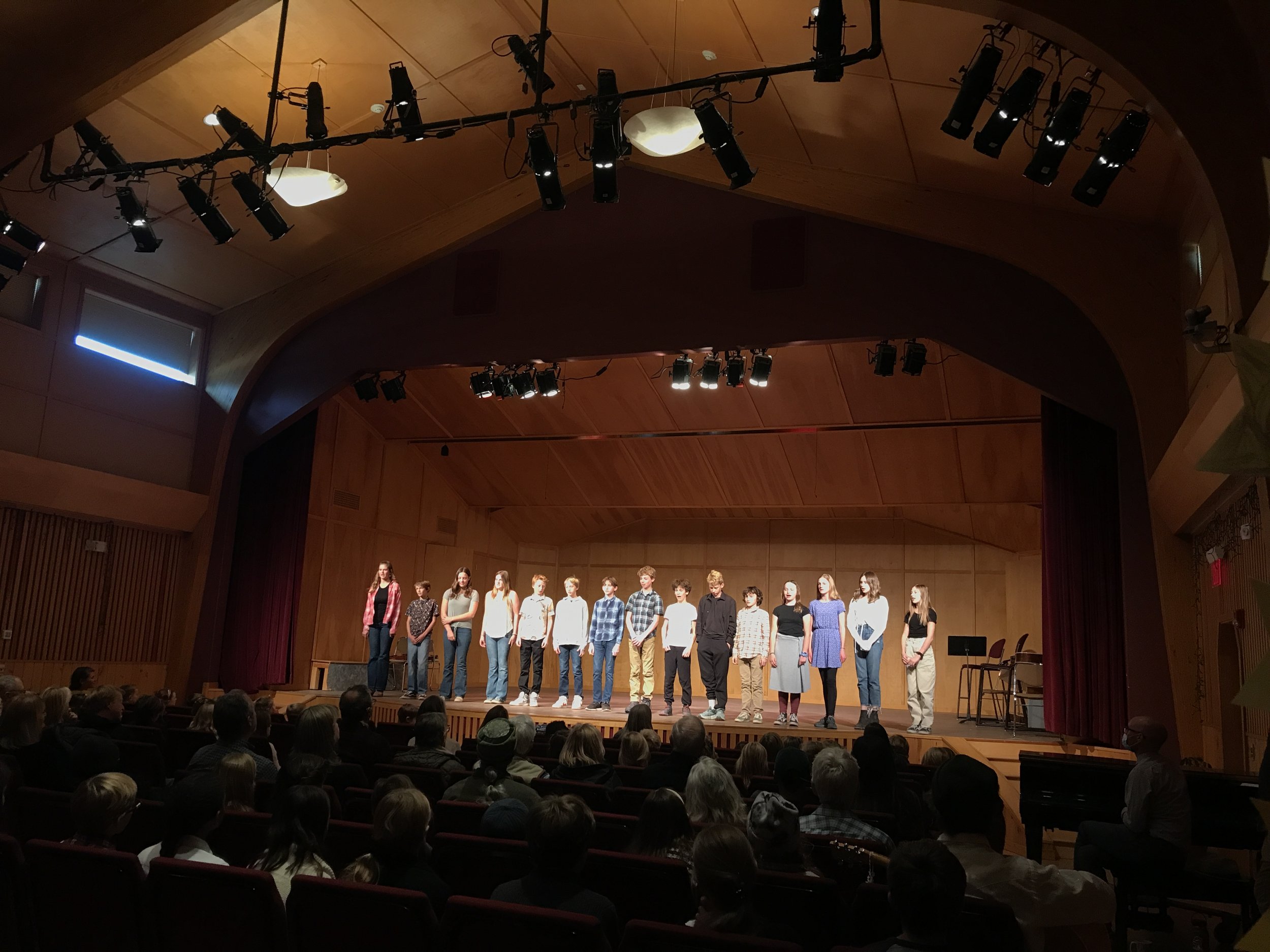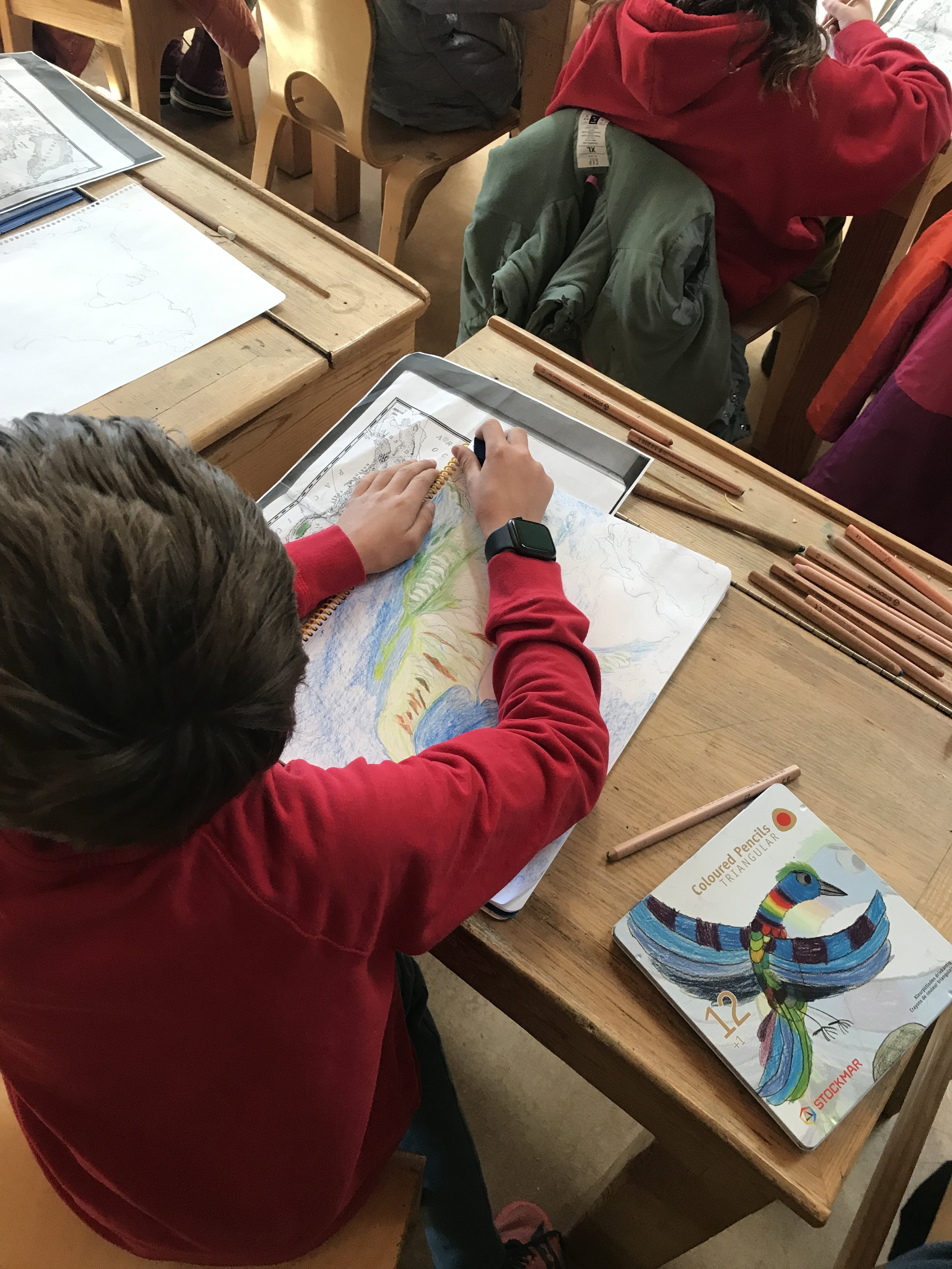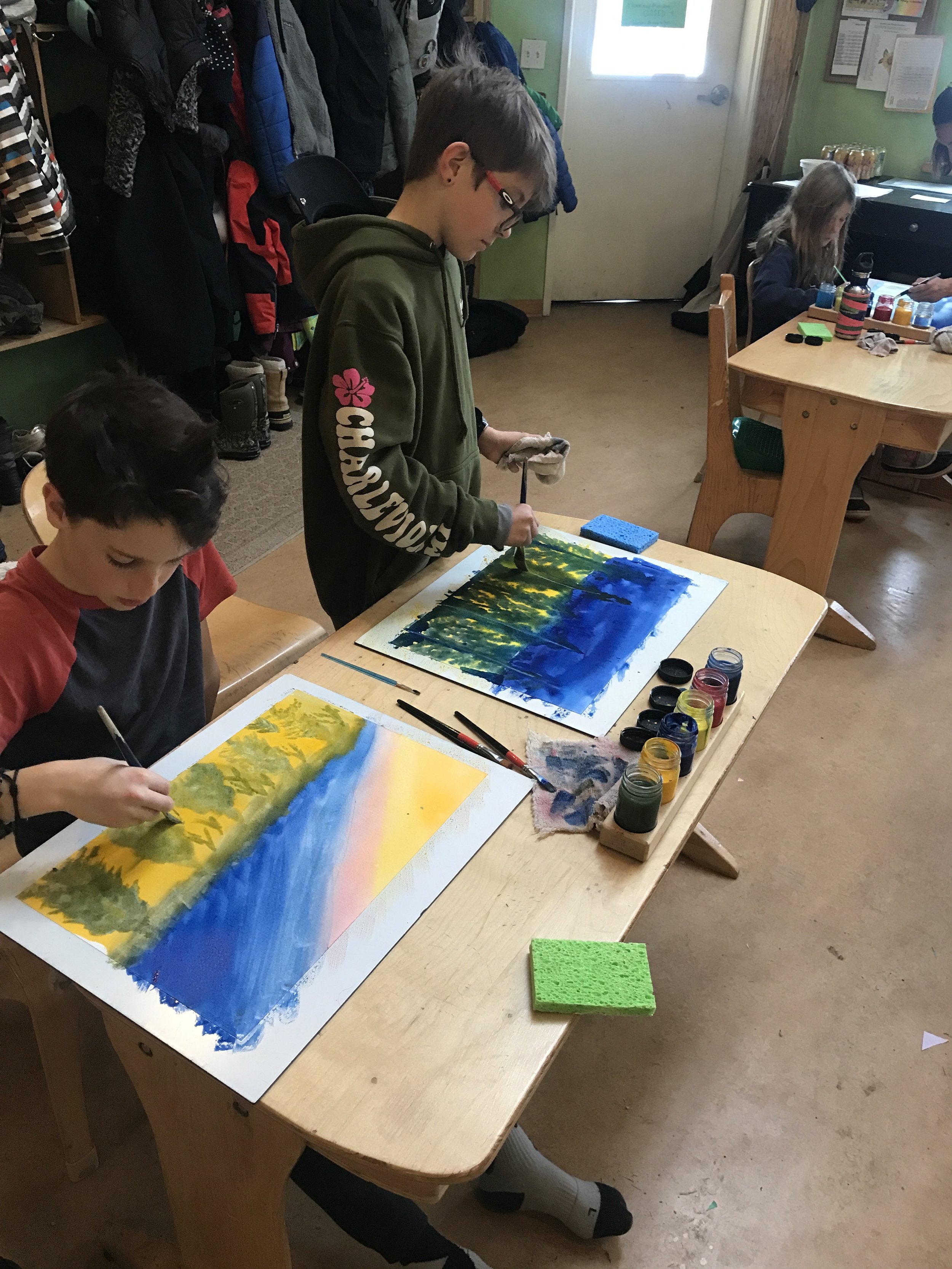Research Shows: Art Improves Academics & Longterm Success
Often the first programs to be cut, in Waldorf Education, art in many different forms is a critical element of our curriculum.
We sometimes hear: Is Waldorf an art only school?
This question stems from that fact that all our graduates produce incredible artwork in a full range of mediums. It can be hard to image how academics blend among all the beautiful artwork. Our curriculum is unique in our view that every student is naturally an artist and by nurturing this innate capacity for creativity, our students are better prepared and more successful to navigate the world of the future. What’s more, art is integrated into subjects to enrich academics. For example, students hands draw their own Main Lesson book page to illustrate and engage with hands on experiments in a science class. This approach helps learning sink in and promotes deeper understanding of concepts.
What’s the Research?
As noted in a recent article from the Public School Review: “As far back as the time of the ancient Greeks, philosophers like Plato recognized the inherent value of studying the arts. Theatre, music, dance, and the visual arts were seen as integral to Greek society.”
These benefits are now being supported by current research and findings. Students who engage in the arts perform better in math, reading and writing. “The Arts Education Partnership performed a meta-analysis of 62 studies that revealed that students who study music have increased achievement and proficiency in math. Reading and cognitive development were found to increase, as were verbal SAT scores.”
Furthermore, “The same study shows that the visual arts have a positive impact on students’ ability to organize their writing. Sophisticated reading skills are promoted as well, including the ability to interpret complex texts, such as those found in science courses. Students that take a combination of arts programs demonstrate improved verbal, reading, and math skills, and also show a greater capacity for higher-ordered thinking skills such as analyzing and problem-solving.” (source)
Another study conducted in Keller Independent School District in Texas found that “students in the arts or athletics outperformed their peers by a wide margin: 14% more students were proficient in English, 20% more were proficient in math, 16% more were proficient in science, and 16% more were proficient in social studies.” (Source). The arts also have a significant impact amongst student populations that come from economically disadvantaged homes. “A report by the National Endowment for the Arts reveals that students with a low socioeconomic status (SES) that have a history of involvement in the arts have better long-term academic, occupational, and social outcomes than their peers. Specifically, high arts involvement led to more students planning to attend college and increased the likelihood that students would apply to a moderately or highly selective college. Furthermore, low SES students who had experience in the arts were found to be three times as likely to earn a bachelor’s degree than their peers.” (Source). According to the same report, the impact extends to the work environment with students who engage with the arts also correlating to higher occupational aspirations, including choosing a major that is aligned with a professional career, such as nursing, accounting, or education.
Research has also found that engage in the arts has social and behavior benefits. “The meta-analysis by the Arts Education Partnership revealed that drama courses in particular helped students develop an improved understanding of social relationships and complex emotional issues. Students in dance courses were found to demonstrate a greater capacity for positive self-expression, social tolerance, and self-confidence as well” (Source)
How is Art Integrated in Waldorf Education?
Beginning in our Early Childhood programs and continuing through 8th Grade, our students are exposed to and engage with a full range of artistic mediums with complexity building over the years. From painting, drawing and pastels to clay, music, theater and more, art is a part of the curriculum for all our students. Rather than separated, art is integrated to enrich academics. For example, students in 5th Grade explore biology by being asked to carefully observe and then draw the plant life around them. This experience heightens awareness and observation while also challenging students to directly engage with what they see. In the lower grades, students create images with the letters of the alphabet embedded in them. For example an M in a mountain which helps students create links and tangible connections with the sounds and ideas of a letter as they relate to the world around them. Pictured above are students creating paper mache lanterns for a festival, performing at an all-school assembly, illustrating a Main Lesson book page with a North American Map and water color painting.
As noted in the recent post from Public School Review, “It’s clear from the research that arts programming for K-12 students is of the utmost importance, not just for their short-term success, but for their long-term success as well. In the short-term, students demonstrate positive growth in the realms of academic achievement and behavior. In the long-term, children develop critical skills that improve their lifelong ability to read, write, and communicate effectively. Participation in the arts as a youngster even improves the likelihood that that child will go to college and get a good job.”
Ready to learn more about our programs and curriculum? Reach out now to start a conversation with enrollment today:

